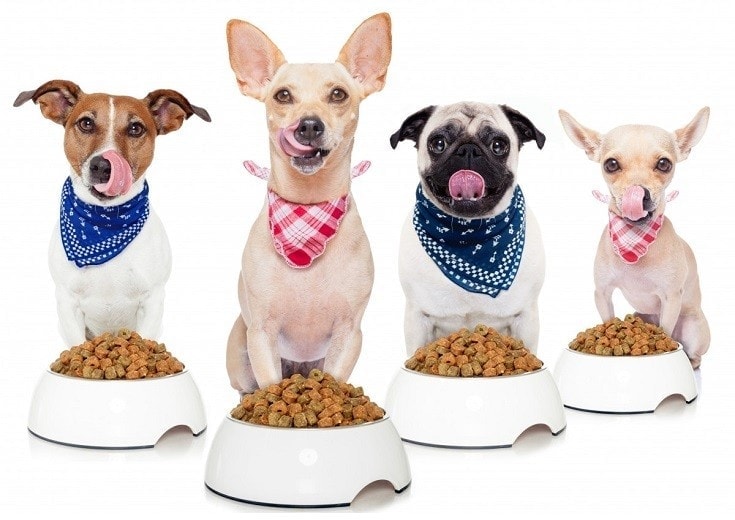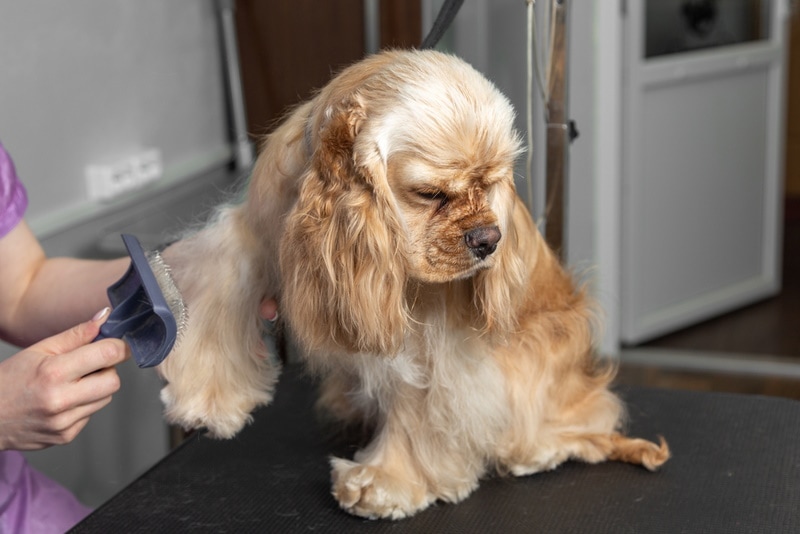How to Reduce Shedding in German Shepherds: 7 Proven Methods
Updated on
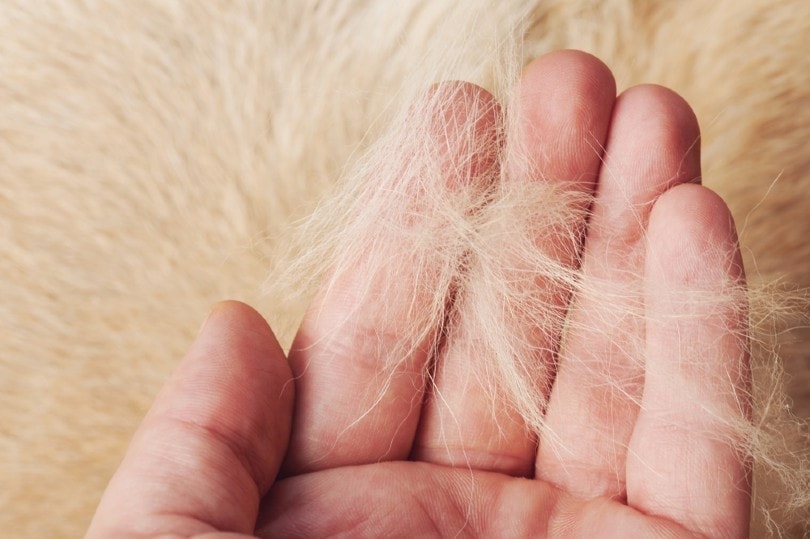
German Shepherds are known for shedding a lot. They may not have the longest fur in the dog world, but they sure do lose it at record speed!
Sadly, there isn’t much you can do to prevent shedding. Some dogs just shed—and German Shepherds are one of them! You are never going to stop a German Shepherd from shedding completely.
However, there are a few methods that may help lessen the onslaught of fur.
The 7 Methods to Reduce Shedding in German Shepherds
1. Brush Consistently
If you aren’t brushing your German Shepherd, you should start now. If you are and they are still shedding profusely, you probably need to brush them more.
Unless you’re literally brushing your dog for hours a day, you aren’t going to hurt their coat or skin (assuming you’re brushing them correctly, of course). Therefore, it is usually best to brush them as much as you possibly can.
At the very least, you should brush your dog once a week. This will prevent them from becoming super furry and also help keep them clean. However, most German Shepherds benefit from brushing much more than this.
Every other day is a good rule of thumb for many canines. During heavier shedding periods, you may even want to bump that up to every day. Some dogs may blow their coat particularly badly during certain seasons and may need to be brushed twice a day.
While brushing can be time-consuming, it is the only foolproof method to reduce shedding. By removing hair with a brush, you will reduce the amount of hair that ends up all over your home.
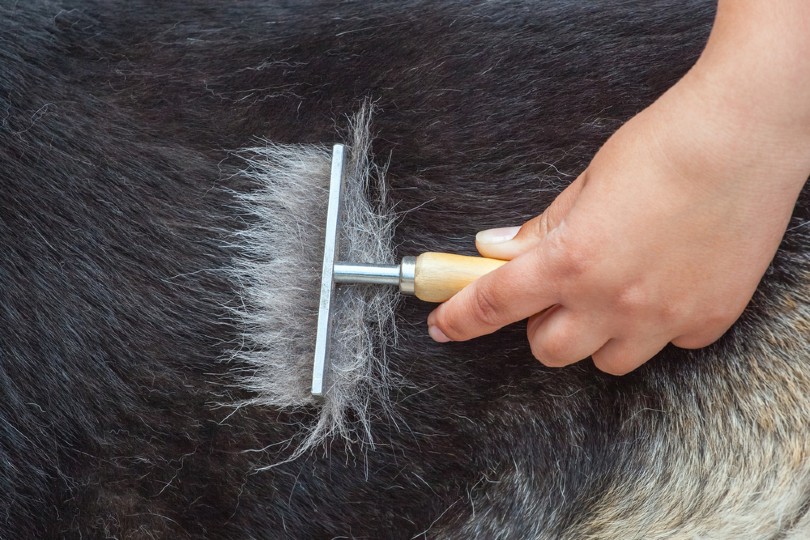
2. Feed a High-Quality Diet
Cheaper foods don’t always contain the optimal nutrition dogs need to thrive. Without certain nutrients, your dog may shed more hair than necessary. Therefore, it is essential to feed your dog a quality diet rich in meat.
If your dog is currently shedding profusely, we recommend taking a look at their diet. This isn’t always foolproof. Some dogs will shed a lot on a quality diet. Other times, diet may not seem to affect their shedding levels at all.
However, it’s worth a shot if your dog is currently eating less-than-stellar food.
This doesn’t mean that you need to jump into feeding your dog a raw or homemade diet, though. Often, these diets aren’t actually healthier. In fact, health problems have been reported in German Shepherds who were fed a raw meat diet.
Most boutique diets with unique animal proteins (like bison or rabbit) usually aren’t healthier either.
Instead, look for foods made by safe brands that contain mostly animal meats, whole grains, veggies, and fruits.
3. Add Flaxseed Oils or Olive Oil
Many oils are quite high in omega fatty acids. Often, dog foods have some sort of oil added to them to increase the omega fatty acid content. However, this is not true with all foods and is not a requirement by the AAFCO. Therefore, many German Shepherds may not be getting the optimal amount of omega fatty acids.
While studies have not been done on omega fatty acids and shedding specifically, they are associated with higher skin and coat health.
Therefore, it makes sense that increasing the amount of omega fatty acids your dog consumes would lower their shedding levels.
However, there is a catch here. The addition of these oils will only lower shedding to a certain extent. You can’t continuously add more oil to reduce the shedding to nothing. It doesn’t quite work that way (not to mention that would likely make your dog sick).
If your dog’s food already contains higher levels of omega fatty acids, adding more is probably not going to help significantly. However, if their food doesn’t contain any, we do recommend adding extra to their diet, either by adding oils directly to their food or switching to a different food altogether. Speak to your vet about how to do this safely.

4. Provide Extra Moisture
Dehydration can lead to dry skin and an unhealthy coat. We highly recommend having fresh water available at all times. Not only may this decrease shedding, but it is also essential for your dog’s health.
Some dogs are notoriously bad at staying hydrated even with fresh water, though. Hotter climates may make it difficult for dogs to drink enough, and certain health conditions can affect your dog’s hydration levels as well.
In these cases, you may want to switch to wet dog food. These often have as much as 78% moisture in them, compared to only about 10% in most dry dog foods. All this extra moisture can provide much of the water your dog needs to thrive.
It is also much healthier than alternative methods for increasing your dog’s water intake, like adding water flavorings.
5. Get the Right Tools
The brush you use during your grooming sessions matters. If you’re using the wrong tools, you could end up not actually doing much—even after you brush your dog for thirty minutes or more.
You probably won’t be able to get away with budget brushes and grooming supplies. For a dog like the German Shepherd, you’re going to need professional-grade tools. Luckily, after you purchase tools, you probably won’t need to purchase them again for a very long time.
We highly recommend investing in a good pin brush for the majority of your brushing. These brushes get deep into the undercoat and cover a large area. You can find large and extra-large pin brushes for German Shepherds, which are probably about the size you need.
Pin brushes can be difficult to get into smaller areas, though. The neck is often the source of much excess fur, but it can be difficult to fit a pin brush into the curved area of the neck. Therefore, you’ll also need a comb of some sort.
You can use a Furminator for smaller areas. However, we don’t recommend just using a Furminator. This tool is helpful in some cases, but it is much too small and slow for the average German Shepherd. You can use it to brush hard-to-reach areas.
However, a comb can be just as helpful in these situations, and they’re much cheaper than a Furminator. A regular comb may not stand up quite as long, though.
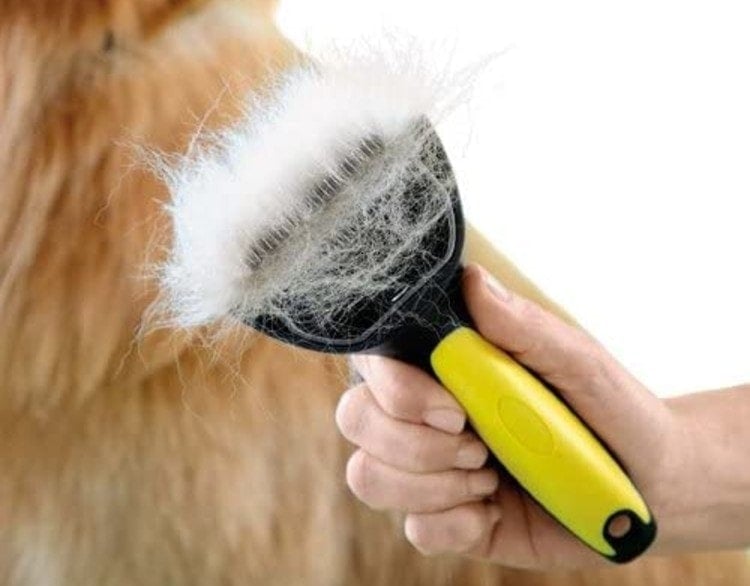
6. Bathe Your German Shepherd Sparingly
You’ll hear a lot about bathing a dog to reduce shedding. However, this is not often recommended for the German Shepherd.
A dog’s skin is not made to be bathed much. Even if you’re using a gentle shampoo, too much bathing can quickly cause the skin to dry out. You can’t lotion a dog’s skin, after all.
Dry, itchy skin will likely lead to more shedding. But this increased shedding will often be the least of your problems. If your dog itches their skin too much, they may cause sores to develop. Secondary infections can be contracted and may require veterinary attention.
We do not recommend bathing your dog weekly or even monthly in most cases. You should only bathe your dog when they are truly dirty, such as after rolling around in the mud.
For the most part, a regular grooming session will pull much of the excess dirt and dust from their fur.
7. Control Any Allergies or Fleas
Both allergies and fleas can cause excess shedding. Food allergies often present themselves as excess itchiness, especially around the dog’s paws. If your canine seems excessively itchy, a trip to the vet may be in order.
All this extra itchiness can cause excess hair loss. At this point, it really wouldn’t count as shedding. Your dog would just be losing their hair. You may even notice bald patches around the area that your dog tends to itch and scratch.
Fleas and other parasites are also itchy. In an attempt to get rid of the fleas, your dog may itch and scratch. Often, this itching takes place on the dog’s stomach and legs. However, it can technically appear anywhere.
While fleas can often be treated at home or by a groomer, allergies are treated best with the help of a vet.
Final Thoughts
German Shepherds shed and there isn’t exactly much you can do about it. However, you may be able to decrease the amount of shedding somewhat by following the steps outlined in this article.
The most straightforward thing to do is brush your dog. If you already have a brushing routine, brush them more. This method is the only sure way to decrease the amount of shedding. After all, brushing removes the excess hair from their coat.
Many dogs need to be brushed as much as every day.
On top of that, nutritional changes may help. If your dog is eating low-quality dog food, we recommend switching to something a bit better. Many high-quality foods contain extra nutrients that may be useful against shedding.
Omega fatty acids are a good example of this. You can either choose a food that contains omega fatty acids or add oil directly to your dog’s food.
Featured Image Credit: PixieMe, Shutterstock


